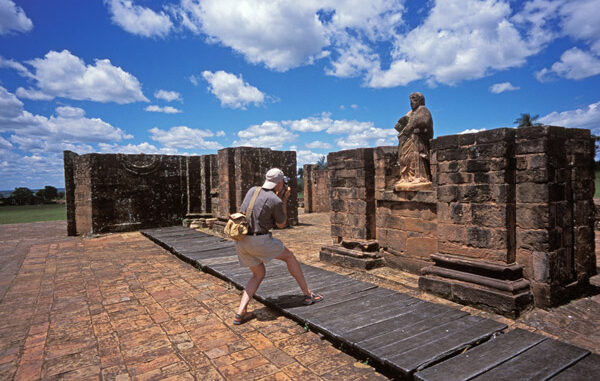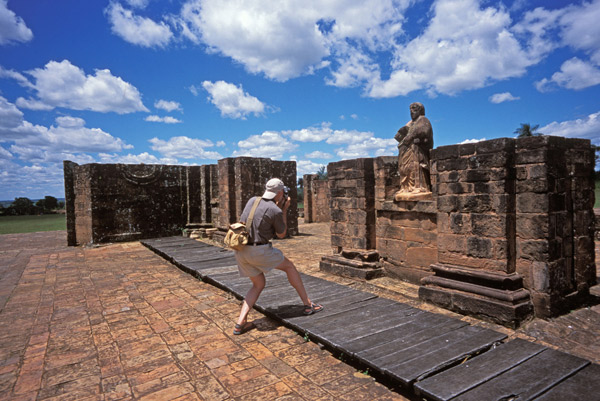

brianlatino/Alamy
Jesuit mission in Trinidad, Paraguay
The Jesuits, an order of Roman Catholic priests, were given permission by the king of Spain to build reducciones (missions) in South America to protect, educate, and convert the Guaraní to Catholicism. The Jesuits founded seven missions in Paraguay, the first in 1610 and the last in 1706. The ruins of two of the missions, Jesús de Tavarangue (1685) and Trinidad del Paraná (1706), both in southern Paraguay near Encarnación, are rich in history and were designated UNESCO World Heritage sites.
Trinidad del Paraná is one of the largest Jesuit missions in South America and also one of the best preserved. Visitors viewing the remains of the massive stone church, sculptures, dwellings, school, and cemetery can imagine what this village was like long ago when it was a thriving community. The Guaraní farmed, raised cattle, and attended school where the Jesuit priests taught them a basic education along with trades, crafts, painting, stone carving, sports, and music. The Guaraní became literate and became talented artists and skillful sculptors. Today visitors can get a glimpse of the architecture, carved stone altar, and statues, all created by the Guaraní who lived and worked here. It is remarkable that before the arrival of the Jesuits, the Guaraní had no experience with carving.
In time, the Spanish government feared that the missionaries were becoming too powerful and the missions too independent. Viewed as a threat to the Spanish colonizers, the Jesuits were expelled from the Spanish territories in 1767 by the king of Spain. As the missions rapidly declined, many Guaraní fled into the forests, but they took with them their new skills and knowledge. The Guaraní people, language, and culture persist today, in large part because of the Jesuit missions. Many of Paraguay’s Guaraní are descendants of members of the mission communities.
Explore More:
1. Jesús de Tavarangue and Trinidad de Paraná missions were designated UNESCO World Heritage sites in 1993. Look up the criteria for determining a World Heritage site and how these missions meet the criteria. Investigate other World Heritage sites in Paraguay. Click here for a graphic organizer to help
2. Investigate in more depth the layout of these Jesuit communities and what daily life was like for the Guaraní who lived there. If you are artistically inclined, you might want to work with a partner and draw a plan or map of a mission, including the various buildings along with the central square, church, and outlying gardens and fields. Explain your drawing to the class in Spanish, if possible.
Share What You Know:
There are twenty-eight Jesuit colleges and universities in the United States. Can you name any of them? If not, you might want to look them up. You may be surprised that many well-known universities are Jesuit. Which is the oldest? The largest?